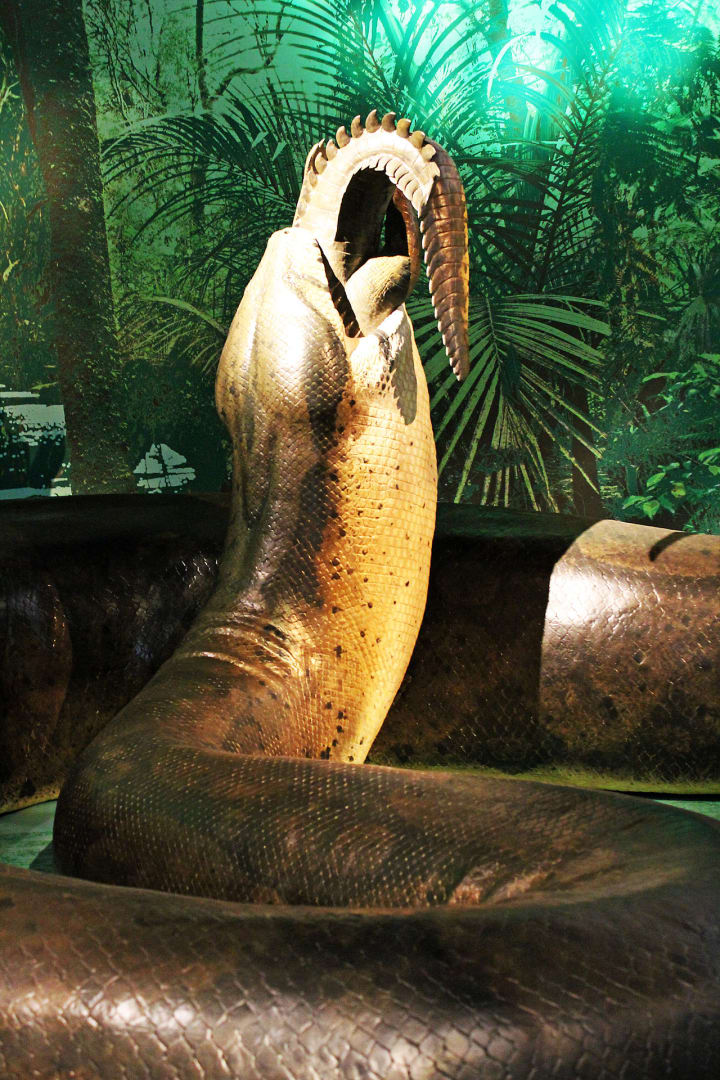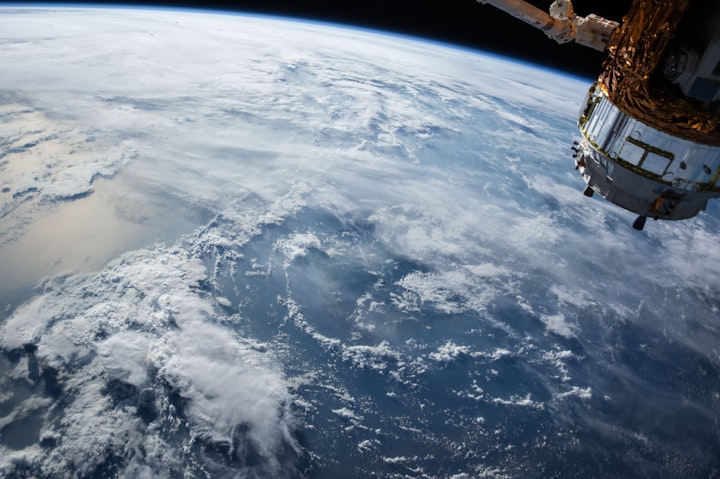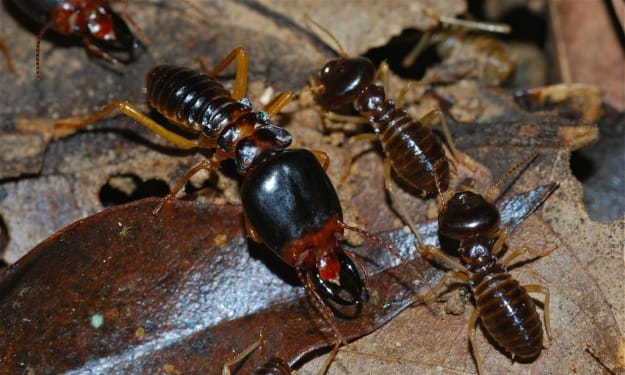
5 Titanoboa

Titanoboa as the name suggests was the largest snake that ever lived. This prehistoric species grew up to 50 feet in length and weighed as much as 2,500 pounds. That’s as long as a semitrailer you see on highways and about twice as heavy as a polar bear. At its thickest point, Titanoboa was three feet wide, which is longer than a human arm.
Titanoboa was also the largest known predator on the planet between the extinction of dinosaurs 65 million years ago and the first appearance of Megalodon ~23 million years ago.
The largest snake species today is the giant anaconda, which can grow to around 15 feet in length — less than one-third of the size of your average Titanoboa. Anacondas rarely reach more than 20 feet in length or weigh more than 500 pounds.
These contemporary giants, which are terrifying enough to see in the wild, pale in comparison to their long-dead ancancestorsl
If Titanoboa had never gone extinct South America would be the same as they are and probably no snake catchers would dare catch one this big.
4 MEGANEURA

Possibly the largest insect that has ever lived, Meganeura looked like a gigantic dragonfly. It was not a dragonfly but a member of a closely related family called Griffin flies. This monster insect used its giant wings to fly quickly through tropical forests and used its huge eyes to spot prey. It could snatch flying insects in midair, grabbing them with its legs and bringing them up to its mouth to eat as it flew.
The wingspan of Meganeura was 2.5ft (75cm), which is 12 times greater than that of dragonflies today. Meganeura was predatory and its diet consisted mainly of other insects.
With them flying around the sky, probably who even dare to get out of the house, we would probably need a cricket bat to kick one out from our house if it came in.
3 ARGAVANTIS

Argentavis , sometimes called the Giant Teratorn, is an extinct species known from three sites in the Epecuén and Andalhualá Formations in central and northwestern Argentina dating to the Late Miocene (Huayquerian), where a good sample of fossils has been obtained. It was among the largest flying birds ever to exist.
With a wingspan estimated at seven Macross, Argentavis was roughly twice the size of the largest flying bird today (Wandering Albatross), and only the long-extinct pterosaurs could have rivaled and exceeded it for size.
2 DEINOSUCHUS

Imagine a crocodile not a normal one with 4 times the size of a modern-day regular crocodile. That's how a Deinosuchus looks just as the name suggests.
Deinosuchus means "terrible crocodile", And these creatures lived up to the name. Fossils from T. rexes and other dangerous dinosaurs show teeth marks from the gain crock. That means the ancient crocs regularly did battle with the king of the dinosaurs. Deinosuchus grew to be 35 feet long and was found in North America.
Although Deinosuchus was far larger than any modern crocodile or alligator, with the largest adults measuring 10.64 meters (34.9 ft) in total length, its overall appearance was fairly similar to its smaller relatives. It had large, robust teeth built for crushing, and its back was covered with thick hemispherical osteoderms. One study indicated Deinosuchus may have lived for up to 50 years, growing at a rate similar to that of modern crocodilians, but maintaining this growth over a much longer time.
Imagine something like this living alongside crocodiles, Not less terrifying than seeing a T.rex in the wild.
1 MEGALODON

Megalodon, meaning "big tooth", is one of the largest predators to have ever lived. megalodon was not only the biggest shark in the world but one of the largest fish ever to exist. Estimates suggest it grew to between 15 and 18 meters in length, three times longer than the largest recorded great white shark.
While regarded as one of the largest and most powerful predators to have ever lived, the megalodon is only known from fragmentary remains, and its appearance and maximum size are uncertain.
Megalodon probably had a major impact on the structure of marine communities. The fossil record indicates that it had a cosmopolitan distribution. It probably targeted large prey, such as whales, seals and sea turtles.
Unlike the great white, which attacks prey from the soft underside, the megalodon probably used its strong jaws to break through the chest cavity and puncture the heart and lungs of its prey. As the shark preferred warmer waters, it is thought that oceanic cooling associated with the onset of the ice ages, coupled with the lowering of sea levels and the resulting loss of suitable nursery areas, may have also contributed to its decline.
With Them In The Sea A trip to the sea would never be the same way as today. And no one would dare go deep with just a raft.
There were way too more and do you think they could fit in current-day animals or are they just a bit too big?






Comments
There are no comments for this story
Be the first to respond and start the conversation.